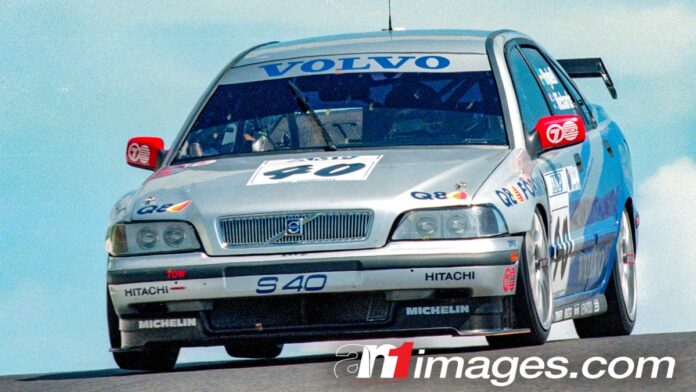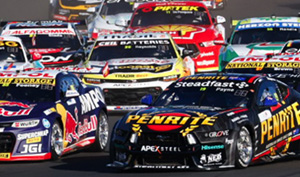IT’S easy to come up with a shortlist of the greatest Shootout laps in the history of the Repco Bathurst 1000.
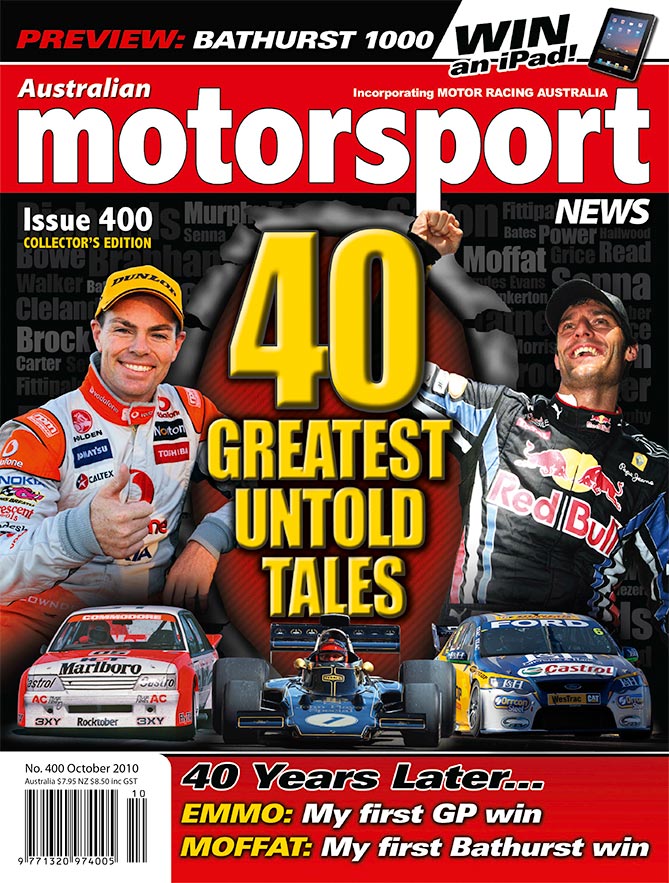
Naturally, Greg Murphy’s ‘Lap of the Gods’ is hard to beat.
Scott McLaughlin’s ‘three’ from 2017 is right in the conversation, as is Kevin Bartlett’s stunning effort in putrid wet conditions aboard the Channel 9 Camaro in 1981.
A lap that often flies under the radar is Rickard Rydell’s pole-winning lap from 1998.
The Swede topped the Shootout by an incredible 1.4878-seconds to secure pole for the second and final edition of the ‘Great Race’ to be run for Super Tourers.
In 2010, then-Motorsport News editor Phil Branagan looked back at the lap for a feature in Issue 400 and outlined why the Swede’s lap deserves far more credit than it receives.
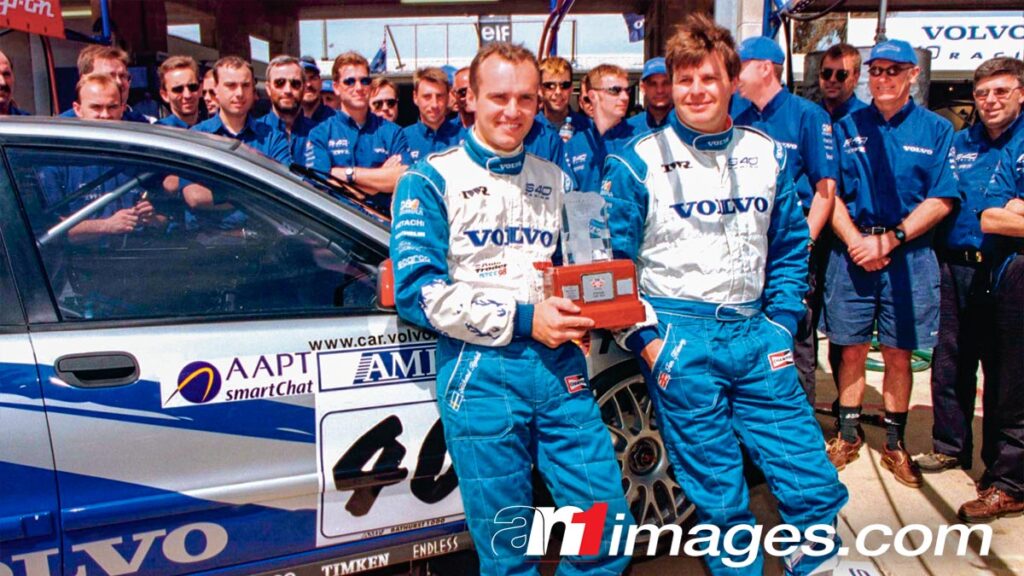
WHAT is the greatest single lap, ever, of Mount Panorama?
Easy answer. Greg Murphy’s pole lap in 2003. The Kiwi’s famed ‘six’ was fast, smooth and centimetre-perfect, and stands alone as the epitome of what every driver tries to achieve around one of the world’s greatest circuits.
Or, does it?
Maybe it isn’t the greatest. Maybe, just maybe, the perfect lap at Bathurst came five years earlier – in a Volvo.
But, it was not just any Volvo. It was the ultimate expression of what a manufacturer gets, if it wants it enough, and what an organisation like TWR can build, provided there is enough funding.
The car in question was a Super Touring Car, and Volvo had been involved in that game since 1994 when it unveiled its first racer. People gasped, people laughed – because it was not an 850 Sedan but an 850 Wagon (okay then, ‘Estate’). It was square and different, just like a Volvo should be, and it got publicity for reasons other than the fact that it was a race winner.
The 850 Sedan (okay, ‘Saloon’) followed, and that got plenty of ink as well – much of it here because it was none other than Peter Brock who raced that version of that car locally, followed by Jim Richards. Again, the reasons why the car got publicity were, perhaps, more man-related than car-related.
But then, Volvo got serious. The larger-than-life 850 was retired and John Gentry, the man who had designed it, got to work on the S40, which was smaller and much more aerodynamic. The car was quick at once, but not quick enough for Rickard Rydell to stop Alain Menu winning the 1997 BTCC title in his Renault Laguna.
“A lot of cars went faster that year and Alain Menu was very quick and won the championship,” said Rydell at the end of that season.
“It’s always the case when you build a car for the first time – you’re not going to get 100 percent out of it because you notice things that you could have done better, which we did with the S40.”
The second version of the car was, quite simply, the ultimate Super Tourer. It featured the same five-cylinder engine, with approximately 300 horsepower, as its predecessor, driving through a TWR-built gearbox (with Xtrac internals). Ohlins supplied the damping, Brembo the braking and Michelin the tyres.
“It’s one of the best cars I have ever driven, to be honest,” said Richards.
“It was so good, it did everything as well as any touring car I have ever driven. It was basically only a Volvo body, and everything else underneath was almost like a V8 Supercar.”
Rydell duly greeted the judge in the ’98 British Touring Car Championship, but it was more his consistency (17 podium finishes in 26 races) that won him the title, rather than race-winning pace. Rydell won five races; Nissan’s Anthony Reid, who was second in the championship, won seven.
“It wasn’t hugely faster [than the ’97 car],” says Richards, who raced both, “but it was just better in every department.”
Before we get into times, now is a good time to note that this was before the track was resurfaced [in 2001], so the numbers are not that impressive, or directly comparable to those of 2003.
For guidance, the Super Touring lap record was Jason Plato’s 2m16.80s from the 1997 race, in which the Volvo 850s just failed to break into the 19s; the 2m19.87s Rydell did in Saturday afternoon’s practice session was the fastest the big square machine could manage.
In 1997, the fastest lap a V8 Supercar did in the separate event two weeks later was a 2m10-flat.
So, the 1998 S40 was quicker but, until the cars made it into qualifying, it did not look massively so.
It was Greg Muphy who topped qualifying, his ‘Holden’ Vectra edging out Rydell by 0.11s. With co-driver Russell Ingall having done much of the set-up work, the Vectra looked like a threat.
But, the TWRs had some tricks up their sleeve.
“They put different gears in the box, so it was in first gear at Hell, at Murray’s and The Cutting,” says Richo.
“We almost had to push it to get the thing going in pitlane! First gear was about what we would run for second, and it was a lot closer in the ratios, but we couldn’t do that in the race.”
Brit Tim Harvey set the early pace in the Shoot-out, taking the other S40 into the 16s and all but matching Murphy’s time. Steven Richards topped that, before Rydell glided through Murray’s Corner, and set off on his lap.
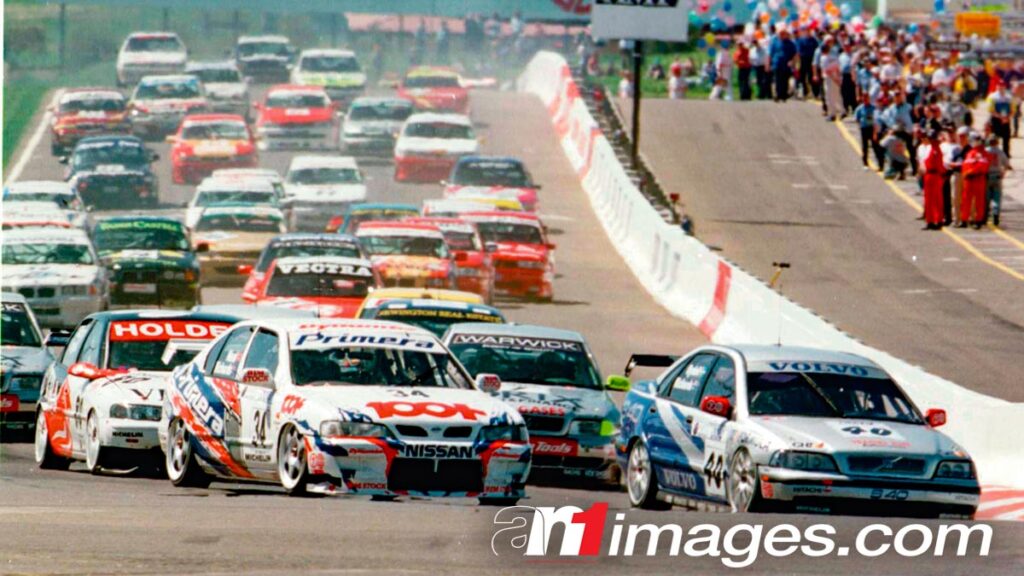
And … not much happened. I was fortunate enough to be close to the TWR brains’ trust, just as I was five years later for Murphy’s Lap of the Gods in the Kmart car, and what struck me about both laps was how calm everyone was, as lower and ever lower numbers came up on the telemetry.
On the in-car camera, Rydell appeared to be making almost no physical effort as the silver and blue car drifted from entry to apex to exit, as if guided by some higher power.
The result was very impressive; 2m14.9265s, and pole position by a margin of 1.48s over Steve Richards, who qualified second in the Nissan. (Murphy’s margin over second in 2003 was 1.09s.)
So it was that a Volvo started from pole, the last time any car other than a Holden or a Ford has done that.
The next day, the two cars fought out a massive battle, Richards father and son starting the race (after pitlane commentator David Rose brokered a deal between the normally-at-war teams!) and Rydell bringing the Volvo home to a famous win.


